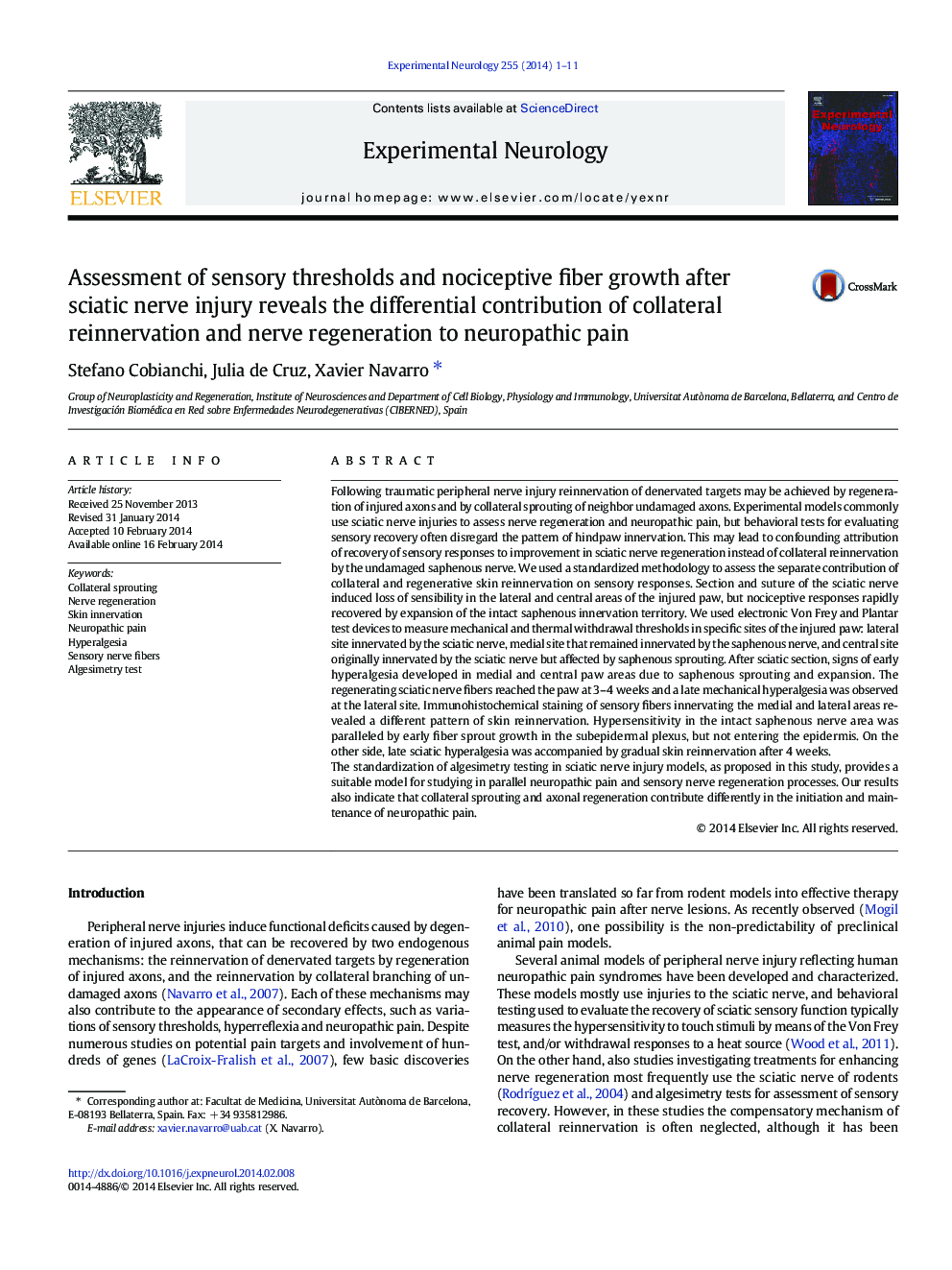| کد مقاله | کد نشریه | سال انتشار | مقاله انگلیسی | نسخه تمام متن |
|---|---|---|---|---|
| 6017815 | 1580177 | 2014 | 11 صفحه PDF | دانلود رایگان |
- Collateral sprouting and axonal regeneration contribute differently in the initiation and maintenance of neuropathic pain.
- The outcome of sensory testing depends on the site of stimulation.
- Landmarks of denervated and adjacent innervated skin should be used when performing algesimetry tests.
- Histological analysis help to differentiate the sprouting and regenerative capacities of sensory neurons.
Following traumatic peripheral nerve injury reinnervation of denervated targets may be achieved by regeneration of injured axons and by collateral sprouting of neighbor undamaged axons. Experimental models commonly use sciatic nerve injuries to assess nerve regeneration and neuropathic pain, but behavioral tests for evaluating sensory recovery often disregard the pattern of hindpaw innervation. This may lead to confounding attribution of recovery of sensory responses to improvement in sciatic nerve regeneration instead of collateral reinnervation by the undamaged saphenous nerve. We used a standardized methodology to assess the separate contribution of collateral and regenerative skin reinnervation on sensory responses. Section and suture of the sciatic nerve induced loss of sensibility in the lateral and central areas of the injured paw, but nociceptive responses rapidly recovered by expansion of the intact saphenous innervation territory. We used electronic Von Frey and Plantar test devices to measure mechanical and thermal withdrawal thresholds in specific sites of the injured paw: lateral site innervated by the sciatic nerve, medial site that remained innervated by the saphenous nerve, and central site originally innervated by the sciatic nerve but affected by saphenous sprouting. After sciatic section, signs of early hyperalgesia developed in medial and central paw areas due to saphenous sprouting and expansion. The regenerating sciatic nerve fibers reached the paw at 3-4Â weeks and a late mechanical hyperalgesia was observed at the lateral site. Immunohistochemical staining of sensory fibers innervating the medial and lateral areas revealed a different pattern of skin reinnervation. Hypersensitivity in the intact saphenous nerve area was paralleled by early fiber sprout growth in the subepidermal plexus, but not entering the epidermis. On the other side, late sciatic hyperalgesia was accompanied by gradual skin reinnervation after 4Â weeks.The standardization of algesimetry testing in sciatic nerve injury models, as proposed in this study, provides a suitable model for studying in parallel neuropathic pain and sensory nerve regeneration processes. Our results also indicate that collateral sprouting and axonal regeneration contribute differently in the initiation and maintenance of neuropathic pain.
Journal: Experimental Neurology - Volume 255, May 2014, Pages 1-11
